50+ Sample Job Forms
-
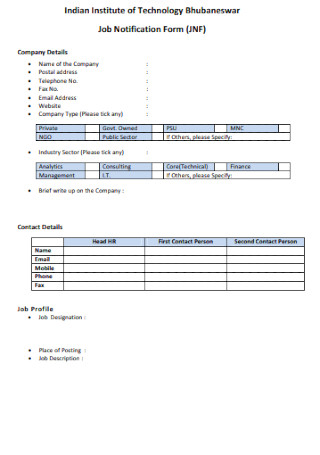
Job Notification Form
download now -
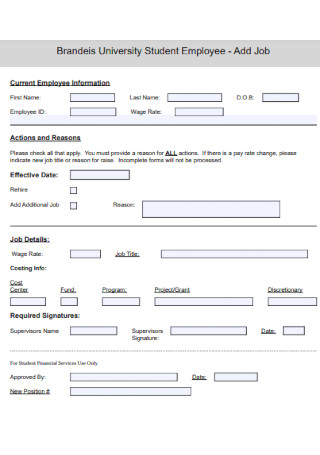
Employee Job Form Template
download now -
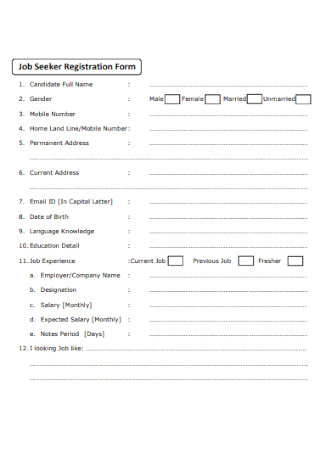
Job Seeker Registration Form
download now -
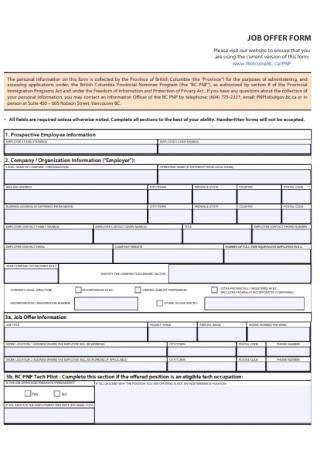
Job Offer Form Template
download now -
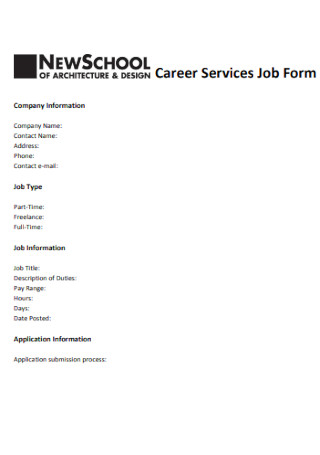
Career Services Job Form
download now -
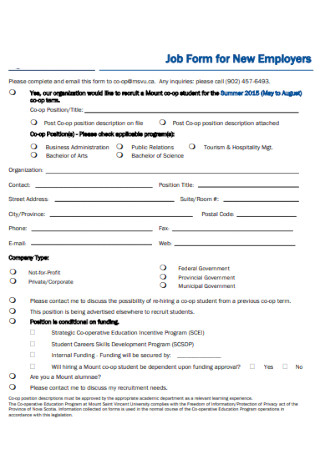
Job Form for New Employers
download now -
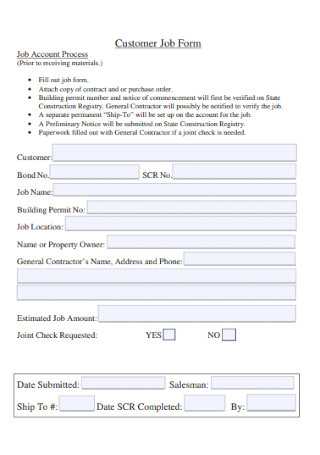
Customer Job Form Template
download now -
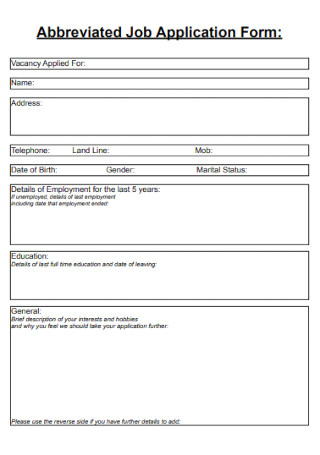
Abbreviated Job Application Form
download now -
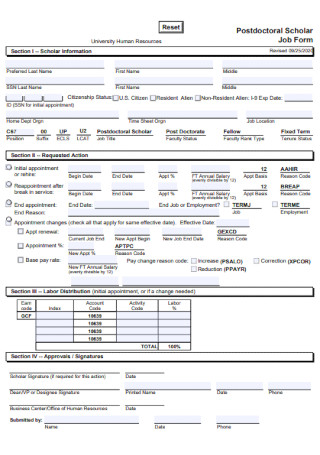
Postdoctoral Scholar Job Form
download now -
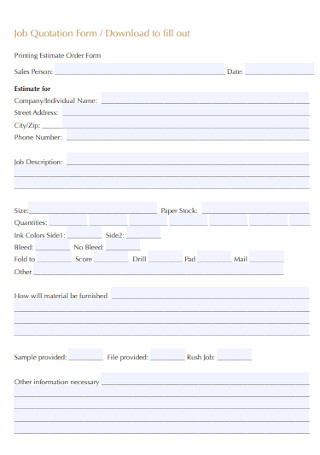
Job Quotation Form
download now -
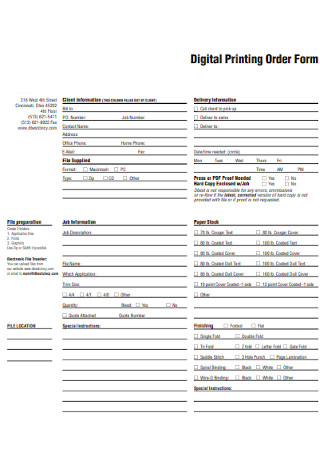
Digital Printing Job Order Form
download now -
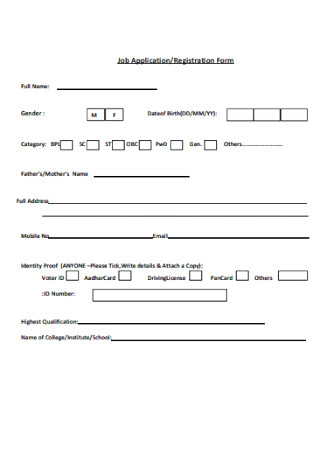
Job Application and Registration Form
download now -
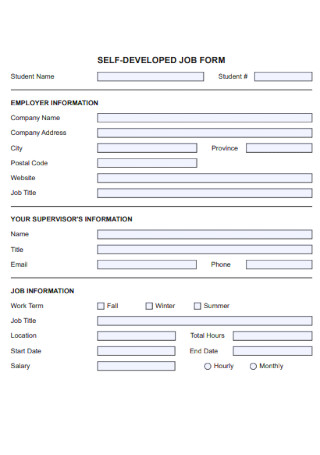
Self Development job List
download now -
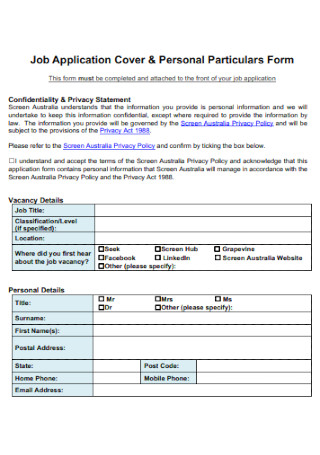
Personal Job Particulars Form
download now -
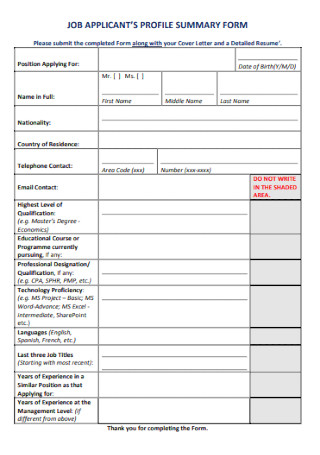
Job Applicants Profile Form
download now -
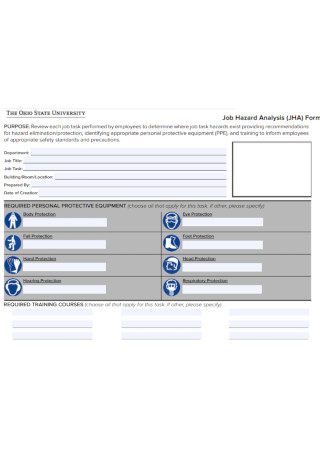
Job Hazard Analysis Form
download now -
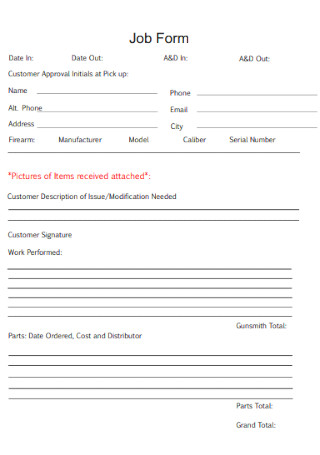
Basic Job Form Template
download now -
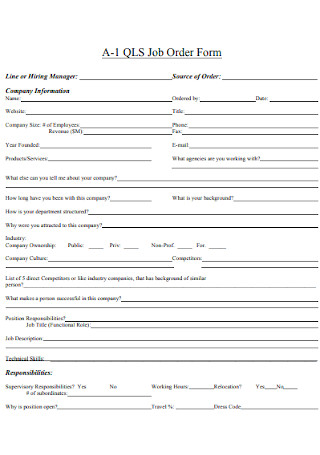
Manager Job Order Form
download now -
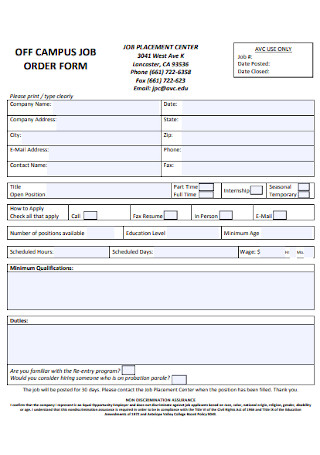
Campus Job Order Form
download now -
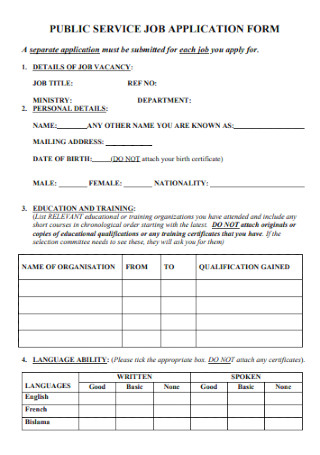
Public Service Job Form
download now -
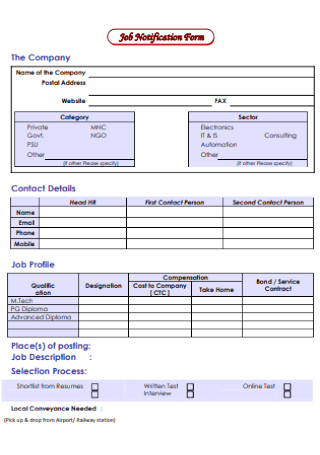
Job Notification Form Format
download now -
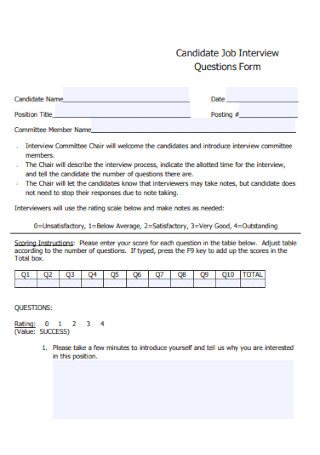
Candidate Job Interview Questions Form
download now -
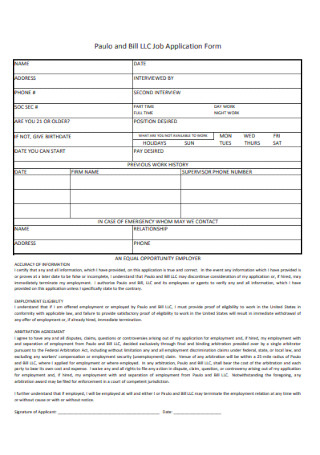
Bill Job Application Form
download now -
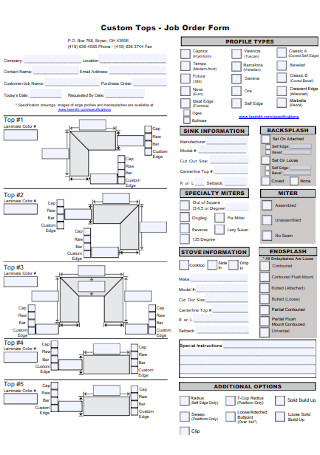
Custom Job Order Form
download now -
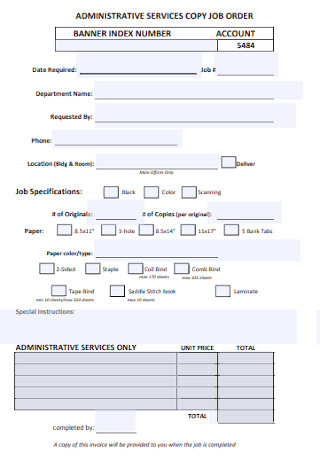
Administrative Job Order Form
download now -
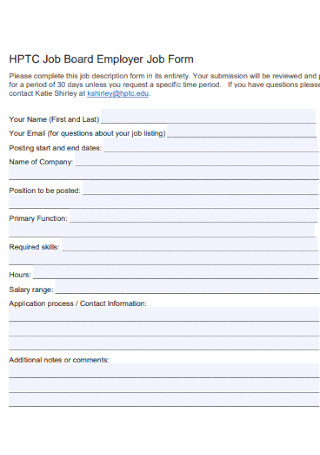
Job Board Employer Job Form
download now -
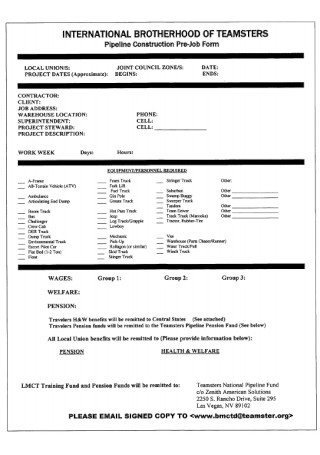
Construction Job Form
download now -
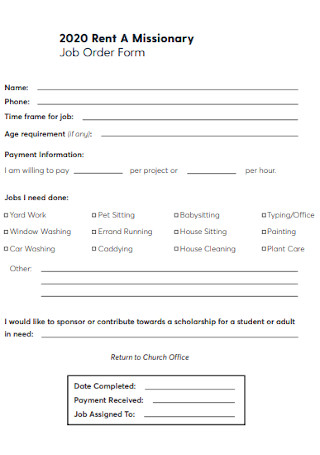
Job Missionary Order Form
download now -
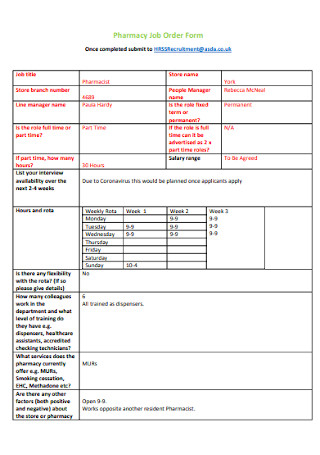
Pharmacy Job Order Form
download now -
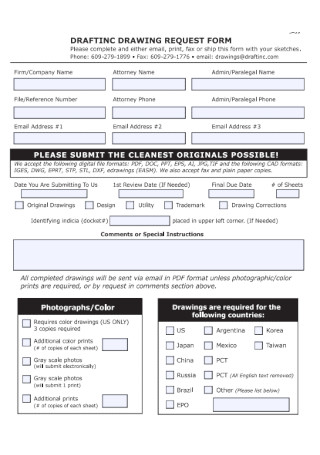
Drawing Job Order Form
download now -
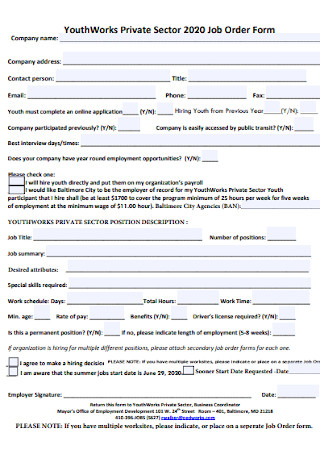
Private Job Form
download now -
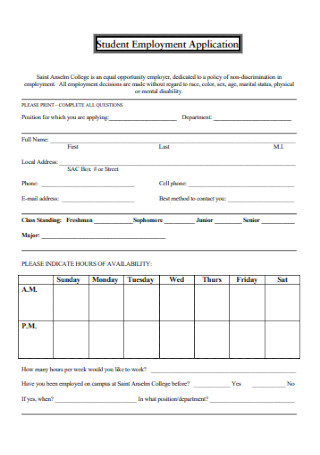
Student Employment Application Form
download now -
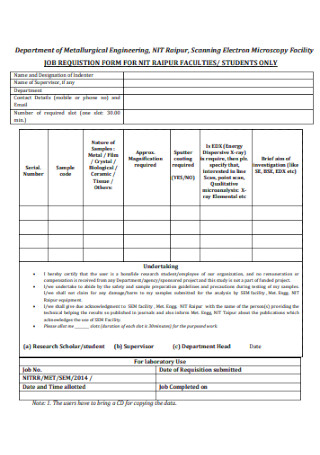
Faculties Job Form Template
download now -

-Job Supervision Verification Form
download now -
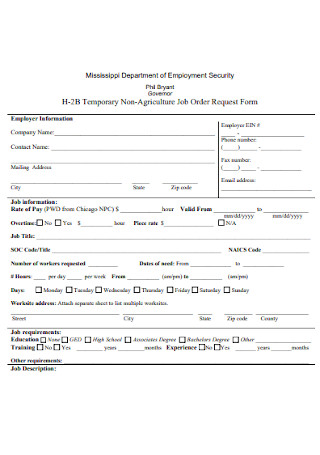
Agriculture Job Order Form
download now -

Domestics Job Form Template
download now -
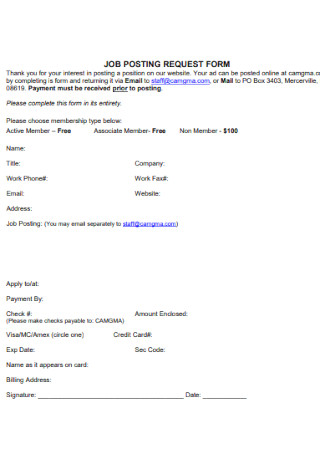
Job Position Request Form
download now -
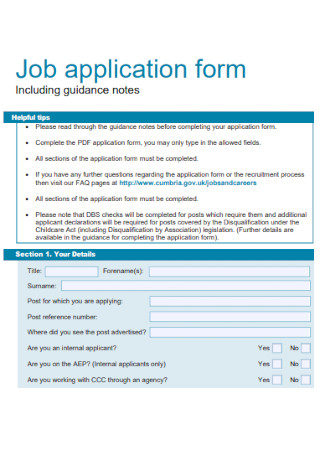
Standard Job Application Form
download now -
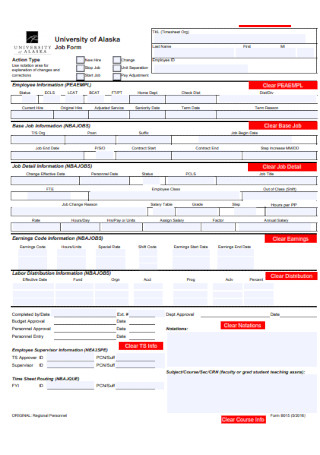
University of Job Form
download now -
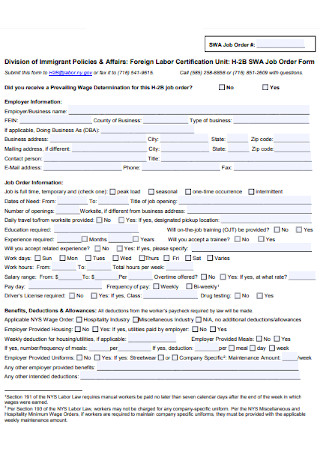
Labor Job Order Form
download now -

Job Application Form Format
download now -
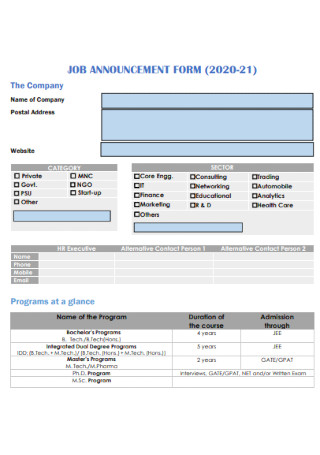
Job Announcment Form
download now
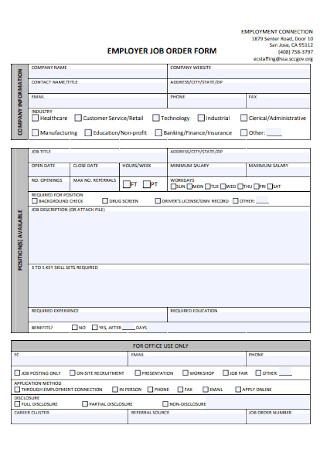
Employer Job Order Form
download now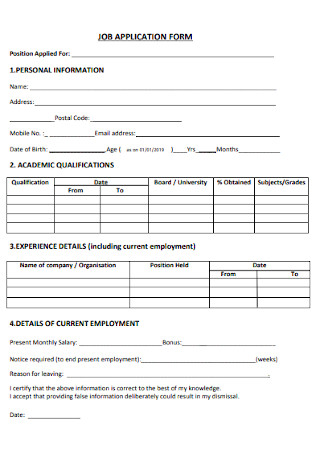
Professional Job Application Form
download now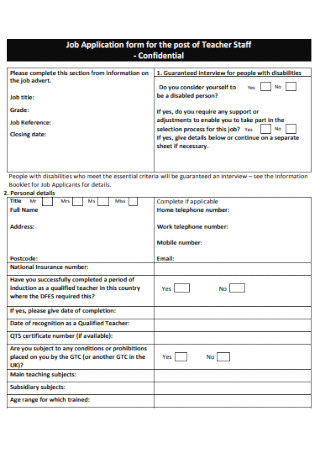
Teacher Job Application Form
download now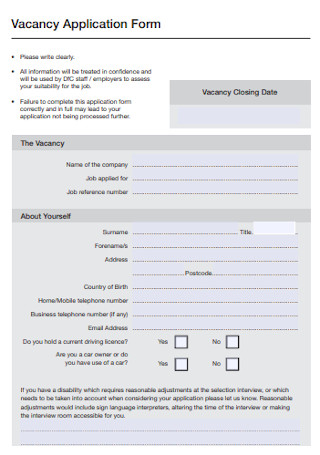
Job Vacancies Application Form
download now
Personal Job Application Form
download now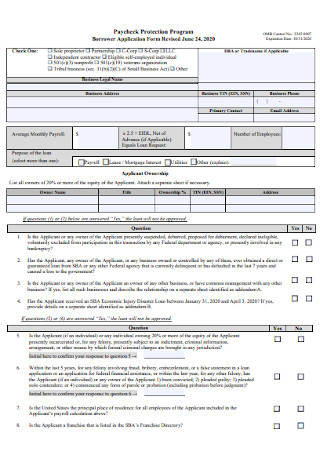
Borrower Job Application Form
download now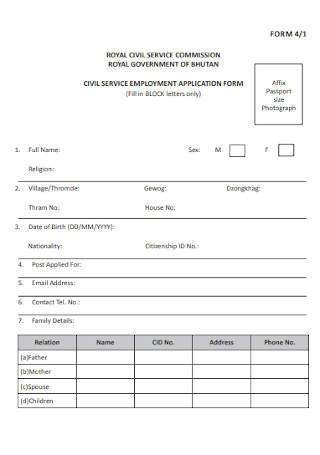
Cili Service Job From
download now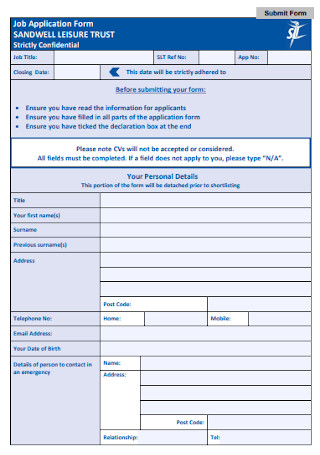
Trust Job Application Form
download now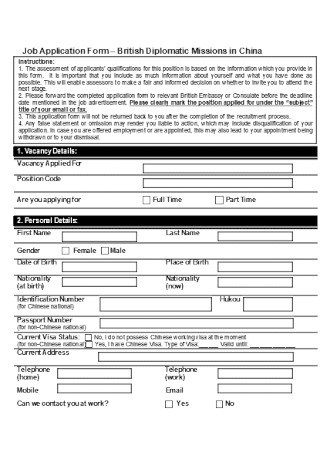
Diplomatic job From Template
download now
What Is a Job Form?
A job form is a formal document that entails the contract or request for employment or paid work. There can be different types of job forms, each with its own specific purpose and objective.
According to an article by Zippia, the average corporate job opening receives around 250 applications.
Types of Job Forms
The phrase ‘job form’ is pretty broad. Thus, it needs to be further broken down into its different types. The following are just some of the most common types of job forms.
Career Tips for Finding the Right Job for You
Whether you are still starting out in the workforce or have a tenured career under your belt, everyone needs some reminding every now and then when it comes to work and professional fulfillment. The following are just some general career tips that can help you find and keep the job that’s suited for you.
How to Create a Job Form
The fastest and most efficient way to create a job form is to use a ready-made template. There are dozens of free and editable templates found above. You can create your own form by choosing a template that meets your objectives then by following the step-by-step tutorial guide below.
Step 1: Objective
The first step in creating a job form is to determine the objective of your form. What specific type of job form do you have in mind? As discussed in previous sections, there are a number of different types of job forms. A job application form will look slightly different from a job order form. Thus, you need to establish a clear objective first before making the form itself. If you are unsure of how to proceed with your job form, it might help to do a bit of research first. A good place to start is by browsing the templates above or other online sample forms. It is helpful to have a good idea and a firm understanding of the type of form you’re making before you craft one.
Step 2: Format
Once you have established the objective of the job form, the next step is to decide on a format. Having a structure in place is crucial. Like any formal document, a standard format is important. Whether you are making a job order form or a job offer letter, make sure the format is consistent. The format is anything that pertains to the layout, paragraph, margins and spacing of the document. If you are unsure of how to proceed, the most practical thing to do is to use an existing template. Using a template saves you a lot more time and energy. You don’t need to start from scratch and more importantly, the format is already set. All you need to do is to edit the text or items in the template. Choose from among numerous sample job forms in the template library above then simply edit it according to your needs.
Step 3: Items or Information
The main text or content of your job form is the items. Items can cover anything depending on the specific type of job form. For example, if you are crafting a job application form, you need to input the various questionnaire items including the name of applicant, contact details, educational background, work history or experience, and other relevant information. But if your form is a job offer or job interview form, then the content would obviously vary. But whatever the items or content in your form, just keep in mind that consistency and clarity is key. It helps to have your audience in mind and to always consider the point of view of the reader.
Step 4: Terms and Conditions
The last step in creating a job form is enumerating or listing the terms and conditions of the job. Of course, you have to evaluate if this applies to your particular job form. For example, a job application form does not typically have this section, but a job order form usually has. Provisions such as payment terms, schedules, and other general conditions may be listed at the bottom or towards the end of the form. It is important to include terms and conditions in your form if they apply because it helps clarify your position and other matters.
FAQs
How do I make a job application form?
To make a job application form, the easiest and fastest way is to use an existing template then edit the questions or items accordingly.
What forms do you need for a job?
Typically, you need a job application form and a curriculum vitae or resume.
What are the types of job applications?
There are different types of job applications including online job applications, in-person job applications and email job applications.
A job form is a basic document but with many variations. If you need help crafting a job form, you can easily browse the wide collection of sample job forms above and customize a template according to your needs!
